Cultivating Conservation
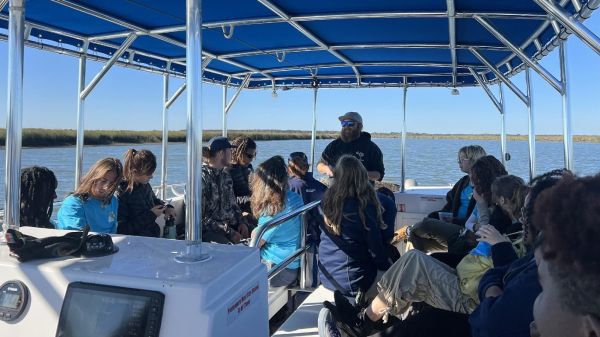
This blog post was written by Claire Filaski, marketing communications coordinator at the South Carolina Aquarium.
In the marshes of Charleston, South Carolina, a new wave of conservationists has washed in with the tide. The South Carolina Aquarium Teen Conservation Crew is bringing a fresh approach to community-driven resilience. Composed of ninth and tenth-grade students, Teen Conservation Crew works to mitigate local effects of climate change through hands-on classes and excursions, effectively bridging the gap between Charleston’s unique environmental landscape and those looking to support it. As a highlight of Teen Conservation Crew’s pilot season, funding by the eeBLUE Aquaculture Literacy Mini-Grants Program enabled crewmates to learn about oysters and explore local aquaculture practices.
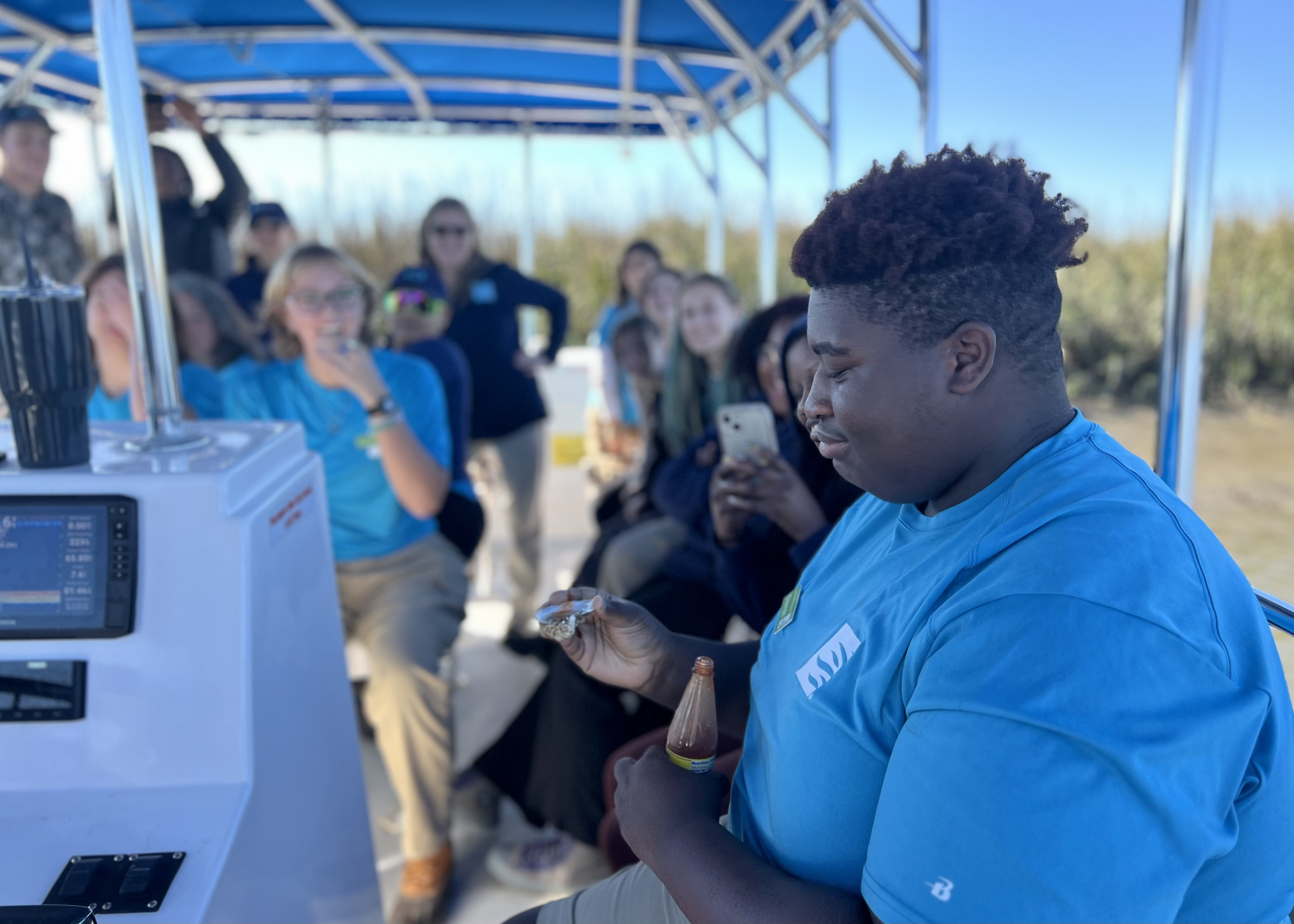
Teen Conservation Crew mates excitedly watch classmate try an oyster. Photo credit: South Carolina Aquarium
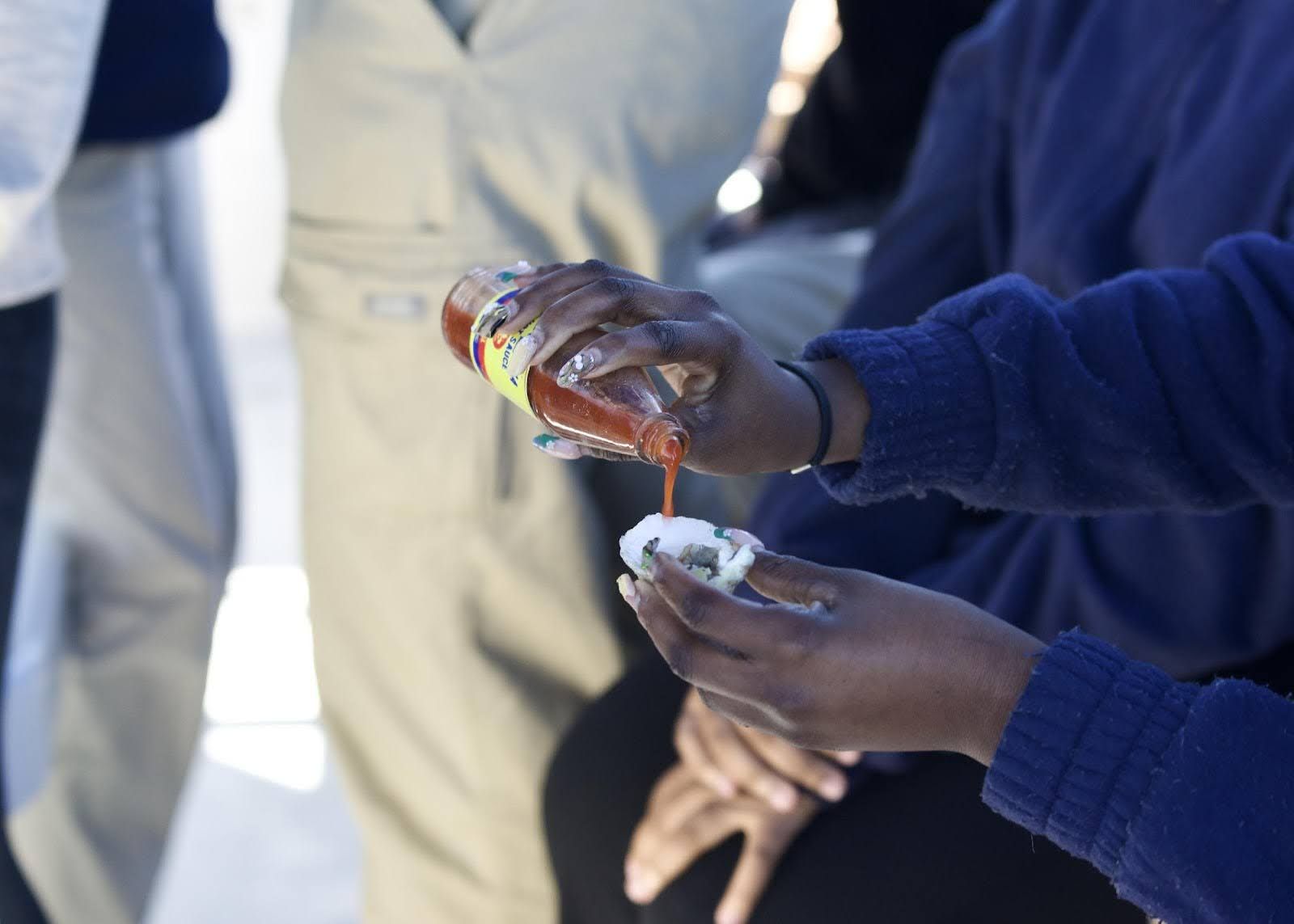
Teen Conservation Crew mate tries an oyster for the first time. Photo credit: South Carolina Aquarium
Crewmates kicked off the day in the classroom before taking to local waterways to see the work themselves. With materials and insight from the South Carolina Sea Grant Consortium and shellfish aquaculture specialists, they learned how oysters offer much more than just a salty snack. They also improve local ecosystems by removing excess algae and nutrients. Uniquely in the Lowcountry, the briny water between Cooper and Ashley Rivers, combined with the proximity to the Atlantic Ocean, concocts the perfect conditions for local oysters to thrive. Despite this, even some die-hard oyster fans adhere to the adage of only eating oysters during “months with an ‘R’”—a concept rooted in the idea that warmer months facilitate the growth of unwanted bacteria amidst wild bivalves.
Thanks to the Mini-Grants Program, crewmates discovered how local farmers who cultivate oyster singles challenge this rule while aiding local waterways and providing sustainable seafood options for Charleston’s oyster-loving communities. On a brisk November afternoon, Teen Conservation Crew traveled down the tidal creeks off the Stono River to visit Charleston Oyster Farm, one of the Lowcountry’s pioneers in oyster aquaculture. Immediately upon setting sail, breathtaking local wildlife complemented an enriching lesson in coastal conservation; bald eagle and kingfisher sightings dotted a bluebird sky, while Atlantic bottlenose dolphins were spotted strand feeding from afar.
After wandering through tranquil salt marsh estuaries, calling out wildlife sightings and learning about oyster aquaculture along the way, crewmates arrived at the farm. Specializing in a mesh bag method, Charleston Oyster Farm utilizes floating wire cages to allow for an open, briny flow, letting the oysters, Crassostrea virginica, filter water and consume algae while simultaneously preventing critters like barnacles, sea squirts, and algae from manifesting. Farm tour guides maneuvered around rows upon rows of these floating ecosystems, providing crewmates with a firsthand look at how these purveyors grow oysters for year-round consumption.
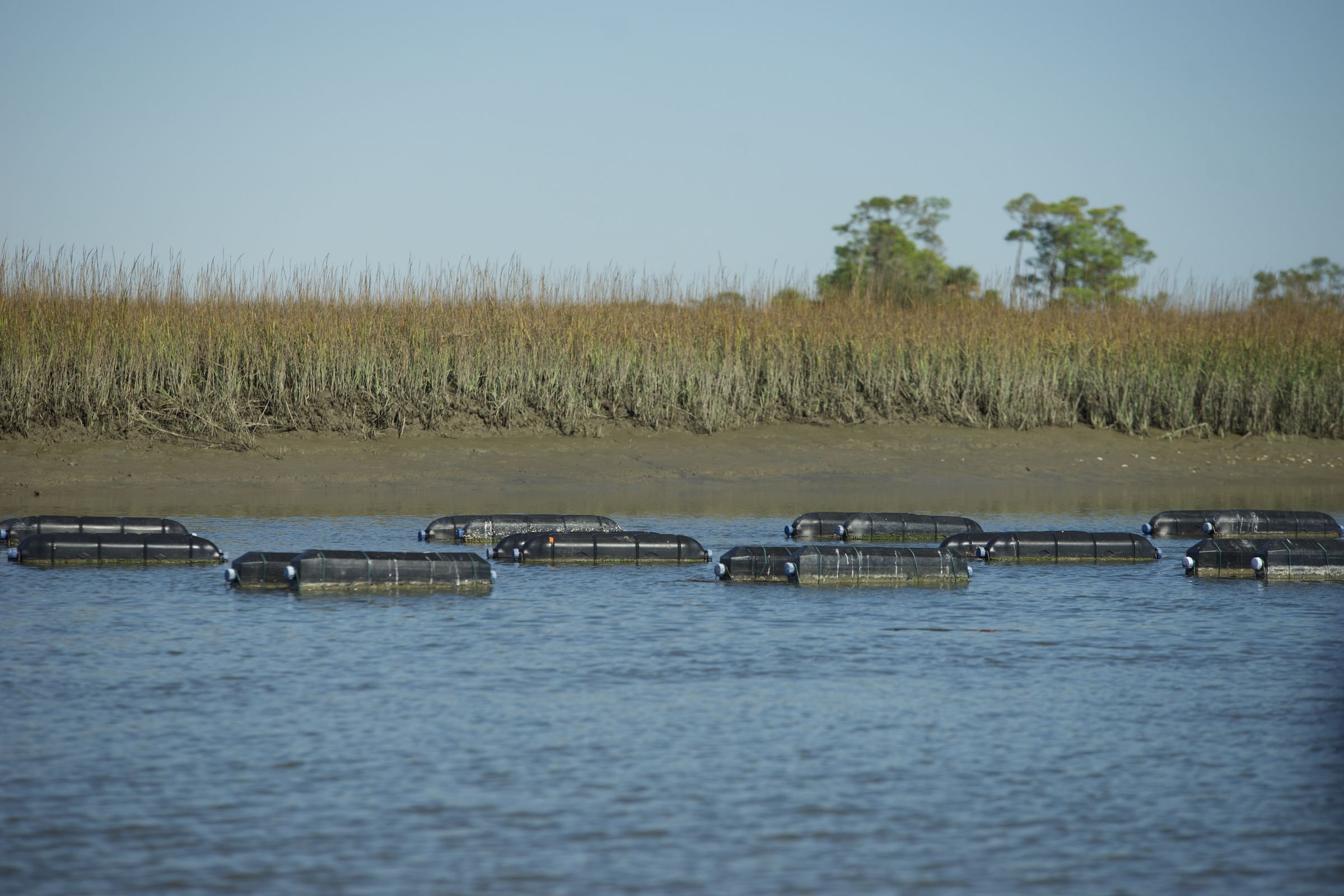
Floating cages allow the oysters to filter, feed and grow. Photo credit: South Carolina Aquarium
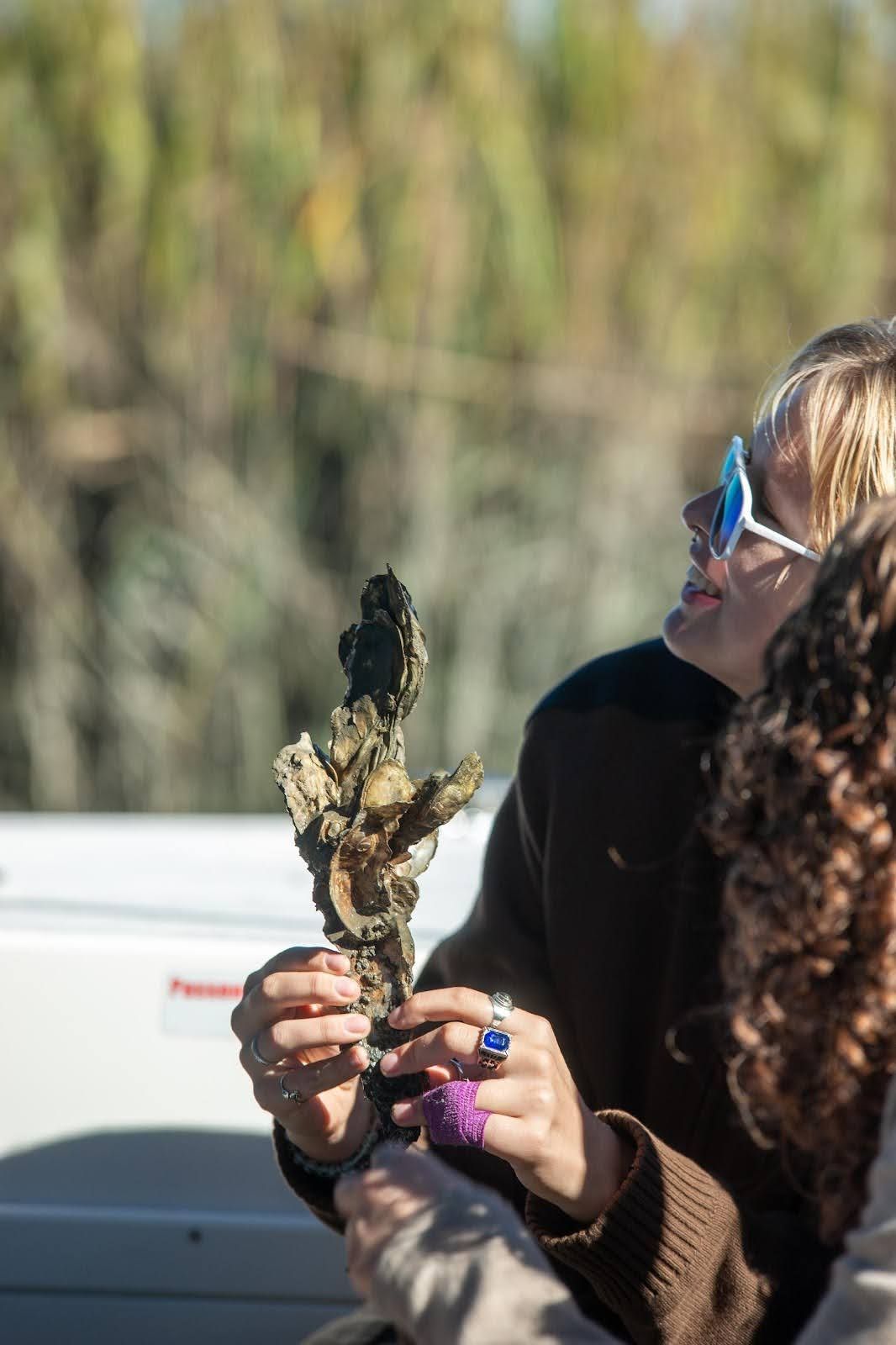
Teen Conservation Crew mate learns about a wild oyster cluster. Photo credit: South Carolina Aquarium
Even with the Lowcountry’s close connection to oyster culture, many of these young environmentalists had never sampled the succulent snacks. In a true “marsh-to-table” approach, tour guides dredged up a floating basket, dipped it into the water once more for a quick rinse, and started shucking straight from the bag. Each crewmate had a chance to sample oysters as fresh as they come, eagerly awaiting their fellow mates’ reactions to their half-shell experience. Complete with an in-depth lesson on the sustainable impacts of these aquaculture farms, as well as how oysters themselves help strengthen South Carolina coastlines, these teens got a firsthand, immersive glimpse into the world of sustainable seafood.
Opportunities like these equip the next generation of environmental stewards to impart the importance of sustainable seafood, working waterfronts, and coastal conservation within their own community. Now in its second year, Teen Conservation Crew stands to build upon these critical, immersive experiences for an even greater impact throughout their Lowcountry landscapes.
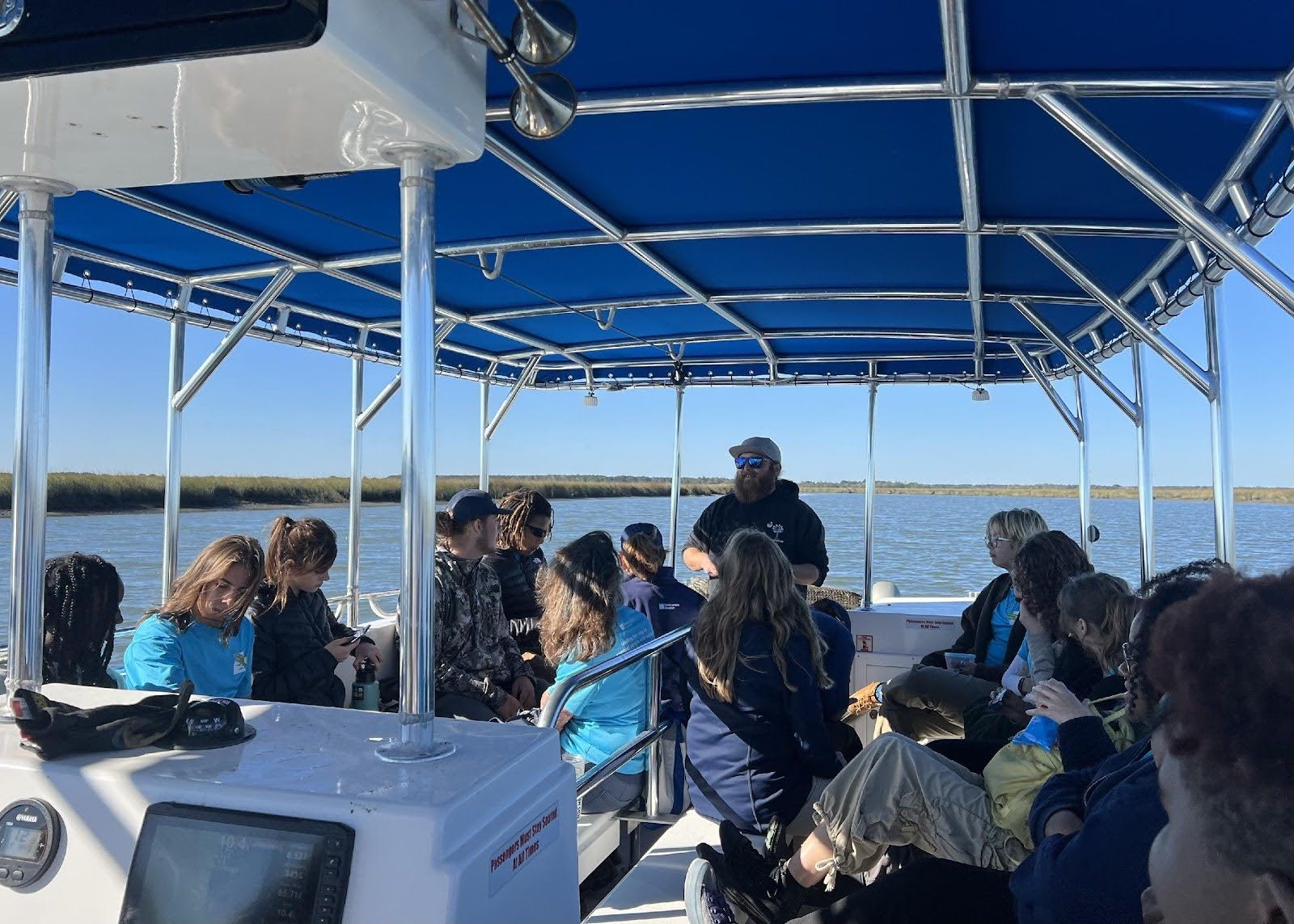
Charleston Oyster Farm professional teaches crew mates about oyster aquaculture. Photo credit: South Carolina Aquarium
Find more on social media!
Instagram: @southcarolinaaquarium
With the eeBLUE Aquaculture Literacy Mini-Grant program, NAAEE is driving significant change for a second time! We are supporting partnerships with the common goal of aquaculture literacy set by the National Oceanic and Atmospheric Administration’s (NOAA) Office of Education, the National Marine Fisheries Service (NMFS), and the National Sea Grant Office. The nine mini-grants awarded will provide more than just financial support; they catalyze innovative educational experiences focused on aquaculture topics and promote public aquaculture literacy in eight states. These grants empower nonformal learning institutions (like aquariums), the aquaculture industry (such as shellfish, finfish, and seaweed farmers), and NOAA partners to make a tangible impact on our understanding of aquaculture. From "Agriculture in Aquaculture” to "Empowering Ocean Stewards," these grantees are helping to support a blue planet!



